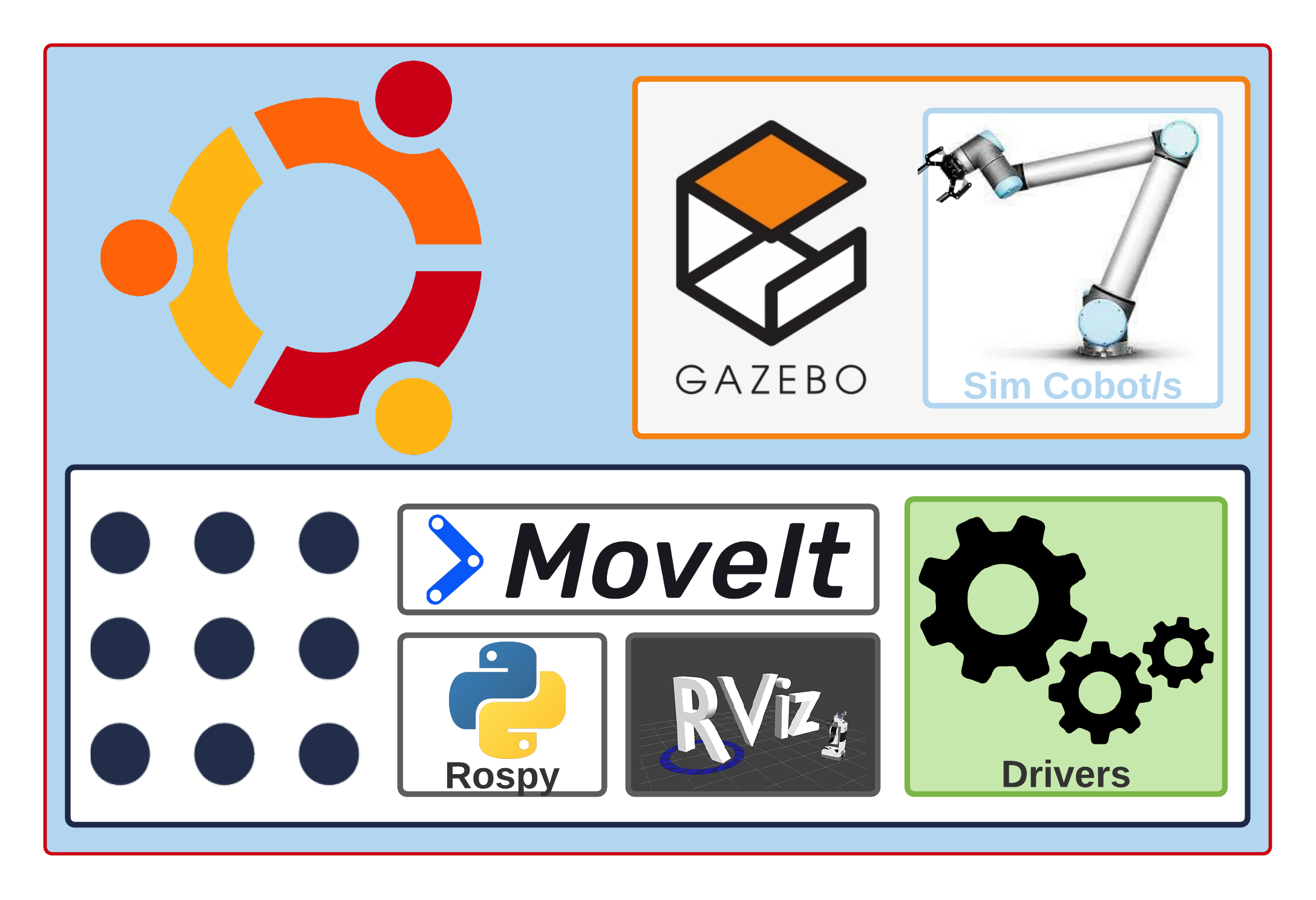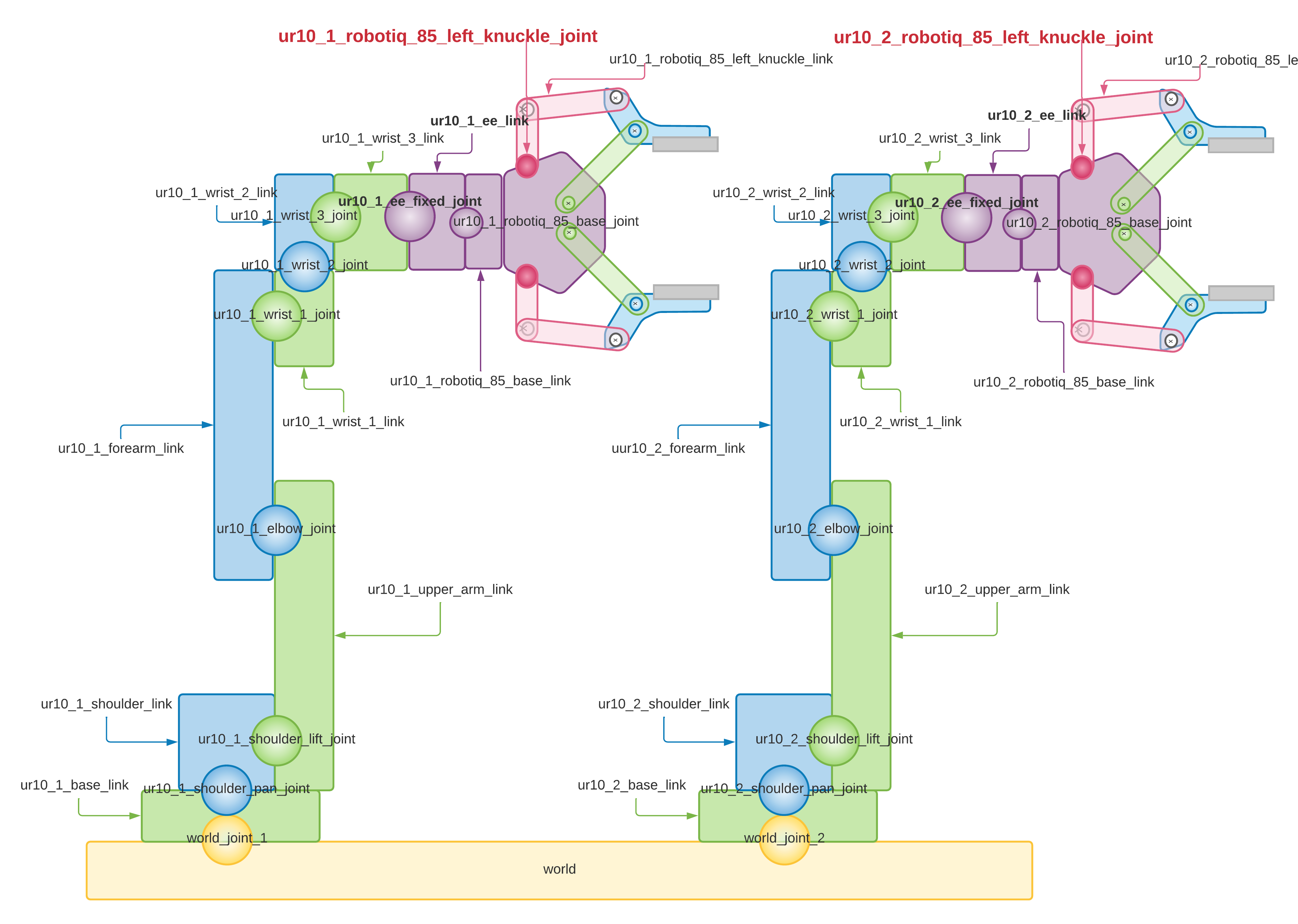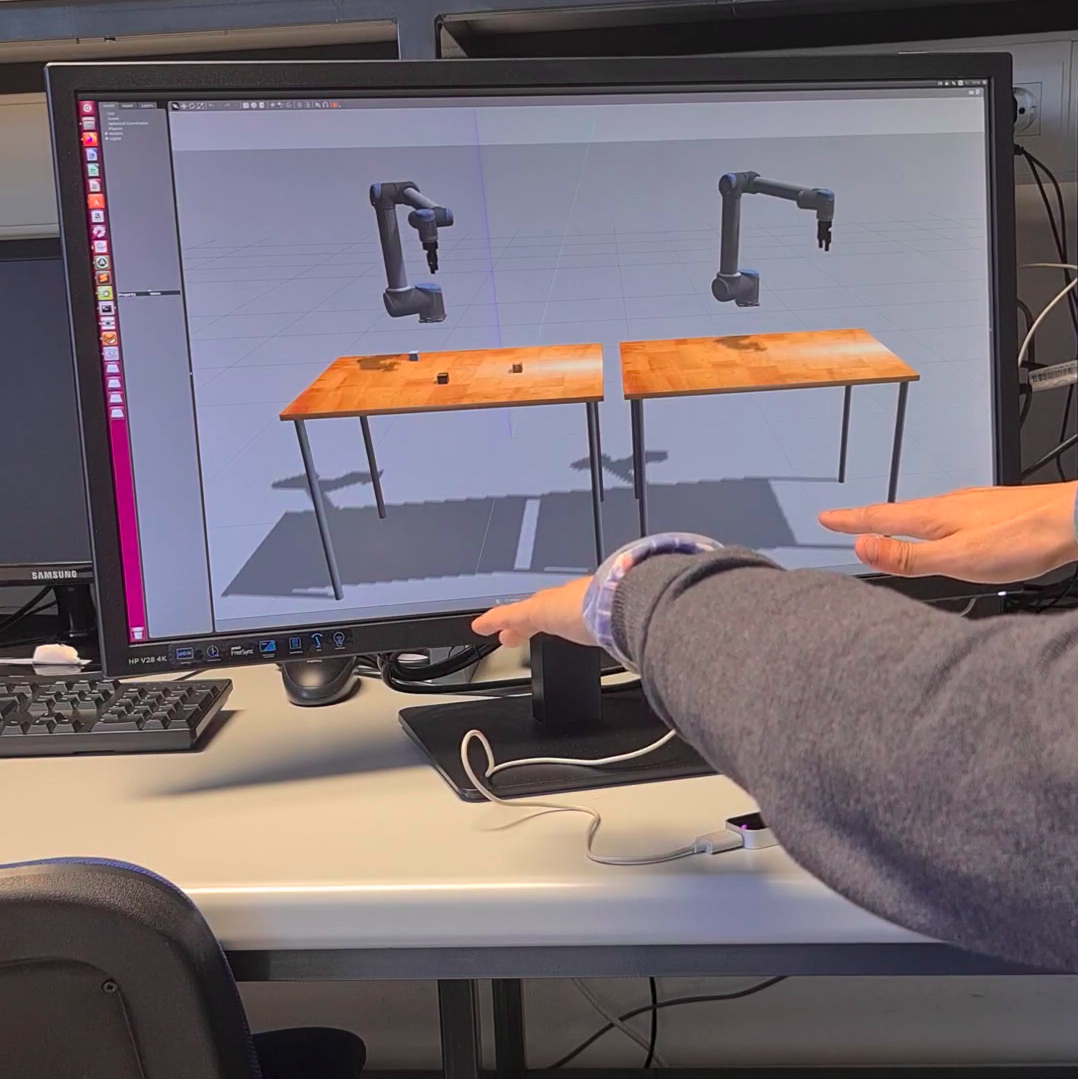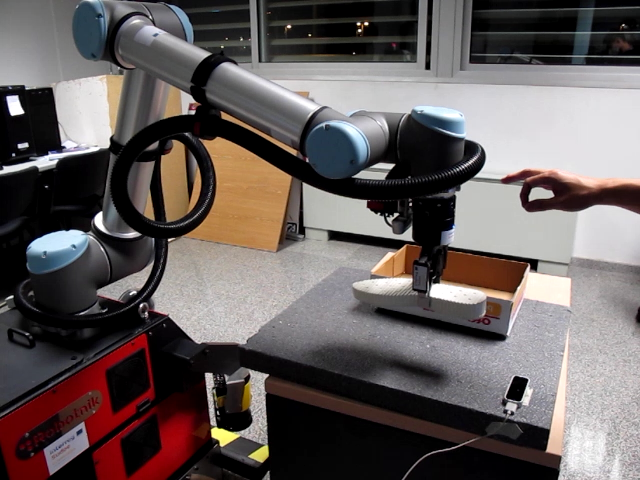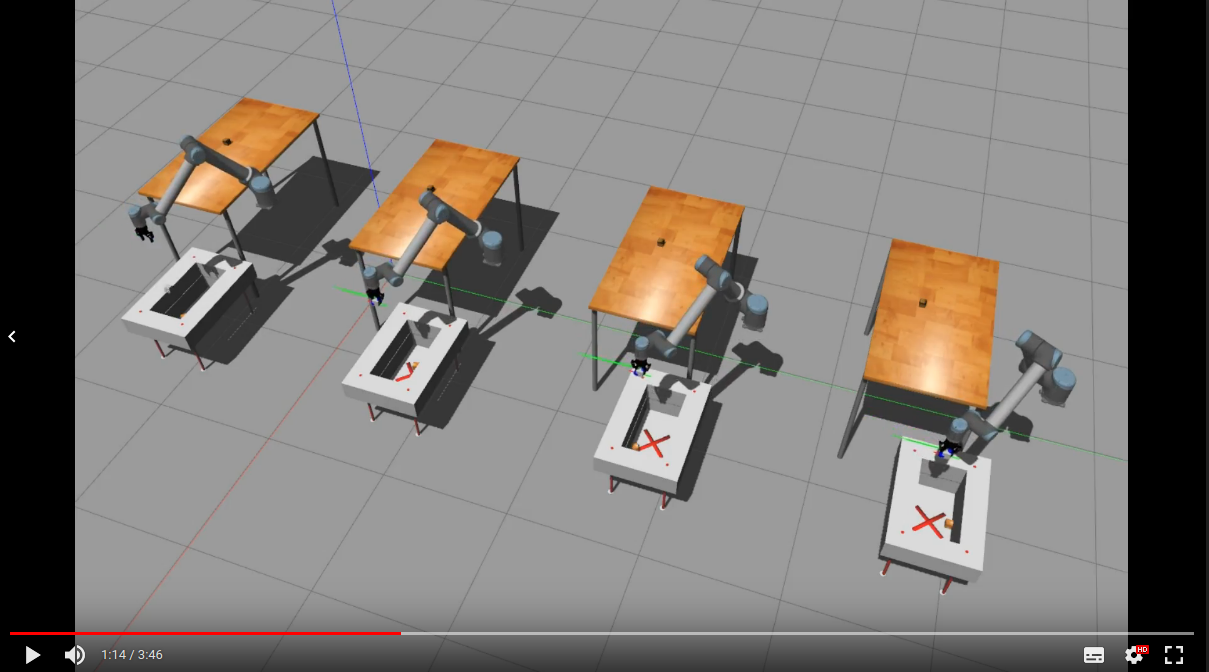Multi-robot system of collaborative robots (cobots) UR10s with grippers from Robotiq (robotiq_85_gripper) that allows simultaneous execution of tasks with different types of controllers and brands of cobots, as well as direct control of the cobot by a person via the Leap Motion device.
Documentation
Basic System Configuration
Here is a step by step explanation of how to install ROS Kinetic Kame and all the necessary tools and packages.
Design and development for one, two and four robots
The proposed solutions revolve around the changes and combinations between the robotic modeling (URDF) and the ROS packages to be used. Organizationally, the proposed solutions are divided into those that use the MoveIt! package and those that do not.
Design and integration of the Leap Motion device into the system to control one and two robots
Here we explain how Leap Motion is integrated into the system developed so far to control up to two robots simultaneously for the different solutions proposed.
Configuration for a UR10 with gripper using its motion planning on the physical robot
All of the configuration previously done in the Gazebo simulator was tested on the physical robot named Campero owned by the university.
Video with the results
Here is a video with the results of the simulations performed in Gazebo. The video shows two and four robots performing a pick & place without human intervention. Then it shows how a person controls two cobots with Leap Motion, and finally the developed result was tested with the physical Campero robot.
Quick start
- Clone this repository:
git clone https://github.com/Serru/MultiCobot-UR10-Gripper - Set the catkin Workspace:
cd ~/MultiCobot-UR10-Gripper/src catkin_init_workspace - Install all the dependecies:
source /opt/ros/kinetic/setup.bash cd ~/MultiCobot-UR10-Gripper rosdep update rosdep install -r --rosdistro kinetic --ignore-src --from-paths src - Build the repository
catkin_make rospack profile source devel/setup.bash -
Launch Gazebo with two robots doing a simple Pick & Place
- Terminal 1:
roslaunch two_arm_no_moveit_gazebo ur10_joint_limited.launch - Terminal 2:
rosrun two_arm_no_moveit_manipulator ur10_1_robot_manipulator.py - Terminal 3:
rosrun two_arm_no_moveit_manipulator ur10_2_robot_manipulator.py
- Terminal 1:
Acknowledgement
This work is part of the RoPeRT research group of the i3A, the University of Zaragoza.

The developed work has been experimentally evaluated and validated, showing a correct operation of the physical robot Campero. For this reason, this work is part of the activities of the project COMMANDIA (2019), co-funded by the Interreg Sudoe Program and the European Regional Development Fund (ERDF).

Authors
- Burgh Oliván, Miguel - Author of the Final Degree Project entitled Multirobot system for the collaborative transport of objects.
- López Nicolás, Gonzalo - Director of the Final Degree Project entitled Multirobot system for the collaborative transport of objects.
The memory of the Final Degree Project can be found in the Repository of TFGs of the University of Zaragoza.
Recognition
Please cite this work if the content of this repository has been useful to you:
BibTeX:
@InProceedings{10.1007/978-3-031-21065-5_34,
author="Burgh-Oliv{\'a}n, Miguel
and Arag{\"u}{\'e}s, Rosario
and L{\'o}pez-Nicol{\'a}s, Gonzalo",
editor="Tardioli, Danilo
and Matell{\'a}n, Vicente
and Heredia, Guillermo
and Silva, Manuel F.
and Marques, Lino",
title="ROS-Based Multirobot System for Collaborative Interaction",
booktitle="ROBOT2022: Fifth Iberian Robotics Conference",
year="2023",
publisher="Springer International Publishing",
address="Cham",
pages="411--422",
abstract="This paper presents the design and implementation of a collaborative multi-robot system based on ROS. The goal is to manipulate objects with multiple cobots simultaneously by following commands given by a user via gestures. Two methods have been designed, developed, implemented and experimentally evaluated: The first one is based on the ROS package called MoveIt! and focuses mainly on configuration to allow simultaneous control of different cobots. The second method involves the development of a third-party motion planner that sends commands directly to the controllers responsible for executing the cobots' movements. The Leap Motion, a device that can be used for gesture recognition, is also integrated into the system to enable user interaction in object manipulation. The system has been tested in simulation using Gazebo and evaluated in a real UR10 robot. The main contribution of the proposed architecture is that it solves the problem of controlling multiple robots simultaneously in ROS. In particular, our approach allows simultaneous execution of tasks with different types of controllers, brands and models, as well as direct control of the robots by using the Leap Motion device.",
isbn="978-3-031-21065-5"
}
